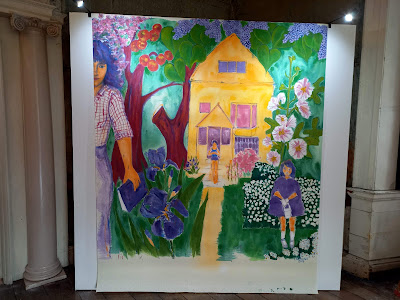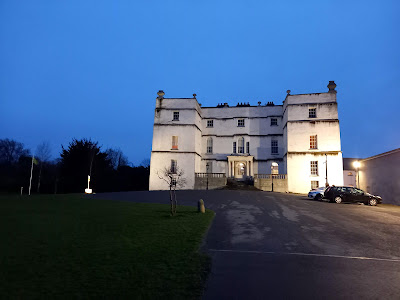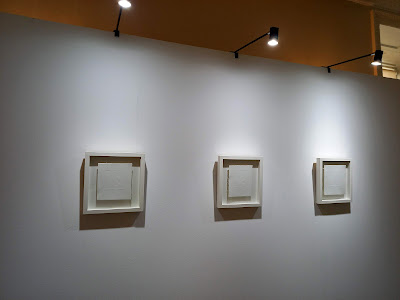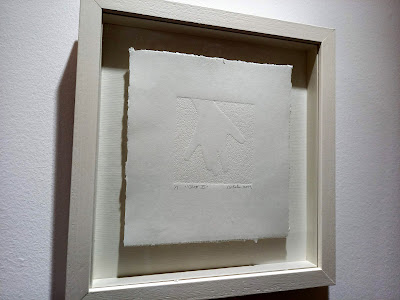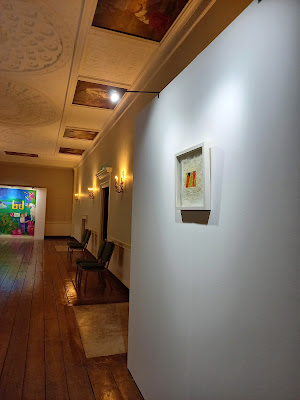Musings about art, writing, music, travel and food (life, the universe & everything...) by Lorraine Whelan
Wednesday 30 March 2022
The Map - exhibition at Rua Red Gallery, Tallaght
Wednesday 23 March 2022
Cora Cummins and Saoirse Higgins at The LexIcon Gallery
A couple of weeks ago I realised that I was running out of time to see an exhibition that had been on my radar for a few months! With the way these past two years have gone, at least I can forgive myself for losing track of time. But at least I got to see the exhibition at The LexIcon Gallery prior to its close. On Steady Ground/Unsteady Ground was a 2-person exhibition by Cora Cummins and Saoirse Higgins. While there was some collaboration in process discovery and prior to exhibiting work (as indicated in an artist talk by Cummins) the exhibition itself is not of collaborative work, rather work by two very individual artists.
Entering the gallery from the adjacent library, the viewer is brought face to face with a number of prints by Cora Cummins and the variation in scale - from tiny mezzotints to the multi-panel etching - is immediately apparent.
Wednesday 16 March 2022
Memory Is My Homeland at Rathfarnham Castle room 3: The Dining Room
The third room of my exhibition at Rathfarnham Castle is accessed by walking across the back of The Saloon from The Pistol Loop Room and entering through the curved door. To see works related to this exhibition and in-progress, simply do a search for Memory Is My Homeland on this blog.
While it is furthest from the door that one has just entered, Kingswood is the largest piece in this room and being so colourful one tends to walk over to it first.
Wednesday 9 March 2022
Memory Is My Homeland - Rathfarnham Castle - room 2: The Pistol Loop Room
Last week I started the "virtual tour" of my exhibition Memory Is My Homeland in The Saloon of Rathfarnham Castle. You can see that post here and/or do a search on this blog for all the work related to this exhibition using the title of the exhibition as key words. The Pistol Loop room is a tower room accessed through a curved door at the back of The Saloon. It is an intimate space and ideal for my prints on handmade silk fibre sheets. There are three false walls in the room, with 2, 3 and 4 prints on each. Here are walls 1 and 2.
Wednesday 2 March 2022
Memory Is My Homeland - Rathfarnham Castle - room 1: The Saloon
Since there are three rooms to my exhibition at Rathfarnham Castle, I thought I would do a virtual tour over the next few weeks of my blog, starting with the first room that one enters to view work: The Saloon.
After one enters The Saloon from The Entrance Hall the colour of the large painting, Knockeen, on your left, stands out




















